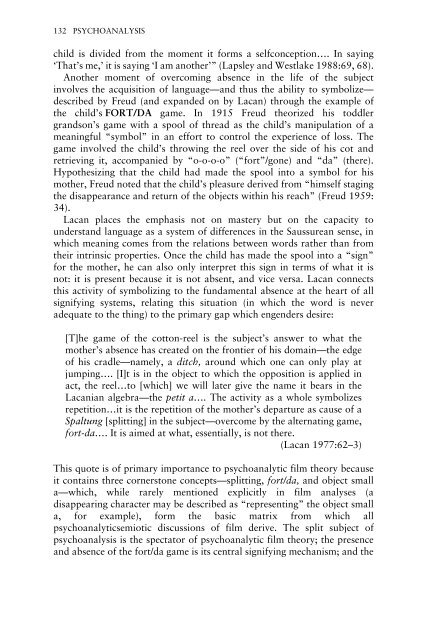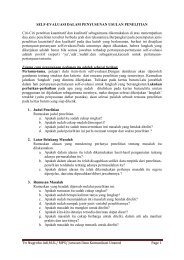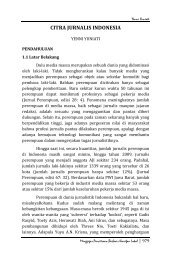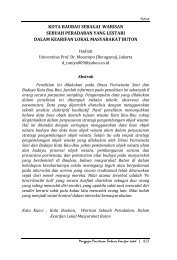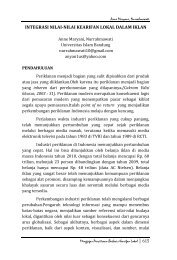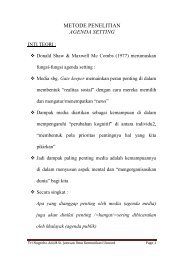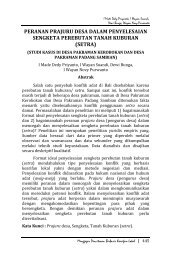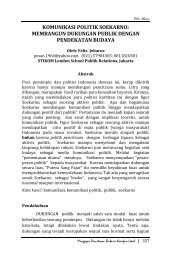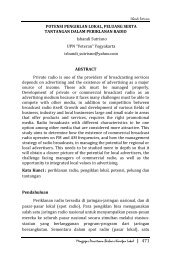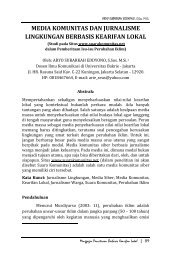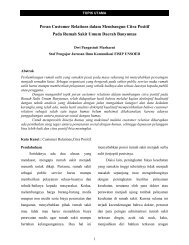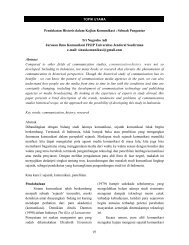New Vocabularies in Film Semiotics
New Vocabularies in Film Semiotics
New Vocabularies in Film Semiotics
You also want an ePaper? Increase the reach of your titles
YUMPU automatically turns print PDFs into web optimized ePapers that Google loves.
132 PSYCHOANALYSIS<br />
child is divided from the moment it forms a selfconception…. In say<strong>in</strong>g<br />
‘That’s me,’ it is say<strong>in</strong>g ‘I am another’” (Lapsley and Westlake 1988:69, 68).<br />
Another moment of overcom<strong>in</strong>g absence <strong>in</strong> the life of the subject<br />
<strong>in</strong>volves the acquisition of language—and thus the ability to symbolize—<br />
described by Freud (and expanded on by Lacan) through the example of<br />
the child’s FORT/DA game. In 1915 Freud theorized his toddler<br />
grandson’s game with a spool of thread as the child’s manipulation of a<br />
mean<strong>in</strong>gful “symbol” <strong>in</strong> an effort to control the experience of loss. The<br />
game <strong>in</strong>volved the child’s throw<strong>in</strong>g the reel over the side of his cot and<br />
retriev<strong>in</strong>g it, accompanied by “o-o-o-o” (“fort”/gone) and “da” (there).<br />
Hypothesiz<strong>in</strong>g that the child had made the spool <strong>in</strong>to a symbol for his<br />
mother, Freud noted that the child’s pleasure derived from “himself stag<strong>in</strong>g<br />
the disappearance and return of the objects with<strong>in</strong> his reach” (Freud 1959:<br />
34).<br />
Lacan places the emphasis not on mastery but on the capacity to<br />
understand language as a system of differences <strong>in</strong> the Saussurean sense, <strong>in</strong><br />
which mean<strong>in</strong>g comes from the relations between words rather than from<br />
their <strong>in</strong>tr<strong>in</strong>sic properties. Once the child has made the spool <strong>in</strong>to a “sign”<br />
for the mother, he can also only <strong>in</strong>terpret this sign <strong>in</strong> terms of what it is<br />
not: it is present because it is not absent, and vice versa. Lacan connects<br />
this activity of symboliz<strong>in</strong>g to the fundamental absence at the heart of all<br />
signify<strong>in</strong>g systems, relat<strong>in</strong>g this situation (<strong>in</strong> which the word is never<br />
adequate to the th<strong>in</strong>g) to the primary gap which engenders desire:<br />
[T]he game of the cotton-reel is the subject’s answer to what the<br />
mother’s absence has created on the frontier of his doma<strong>in</strong>—the edge<br />
of his cradle—namely, a ditch, around which one can only play at<br />
jump<strong>in</strong>g…. [I]t is <strong>in</strong> the object to which the opposition is applied <strong>in</strong><br />
act, the reel…to [which] we will later give the name it bears <strong>in</strong> the<br />
Lacanian algebra—the petit a…. The activity as a whole symbolizes<br />
repetition…it is the repetition of the mother’s departure as cause of a<br />
Spaltung [splitt<strong>in</strong>g] <strong>in</strong> the subject—overcome by the alternat<strong>in</strong>g game,<br />
fort-da…. It is aimed at what, essentially, is not there.<br />
(Lacan 1977:62–3)<br />
This quote is of primary importance to psychoanalytic film theory because<br />
it conta<strong>in</strong>s three cornerstone concepts—splitt<strong>in</strong>g, fort/da, and object small<br />
a—which, while rarely mentioned explicitly <strong>in</strong> film analyses (a<br />
disappear<strong>in</strong>g character may be described as “represent<strong>in</strong>g” the object small<br />
a, for example), form the basic matrix from which all<br />
psychoanalyticsemiotic discussions of film derive. The split subject of<br />
psychoanalysis is the spectator of psychoanalytic film theory; the presence<br />
and absence of the fort/da game is its central signify<strong>in</strong>g mechanism; and the


